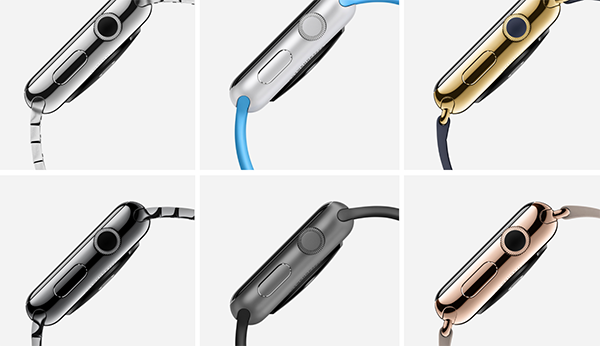Apple Watch will come with 8GB of on-board storage, but not all is user accessible. You would be right to assume that a good chunk of the space would be taken up by the Watch OS, but what users get is just 2GB of storage for use. Head on for further information on this interesting piece of information.
Normally, hearing ‘2GB’ in storage context would be laughable, but for a smartwatch that is built to dance in tune to the iPhone with the occasional untethered use, the storage size is ample enough. As noted by 9to5Mac, the first and internal models of the Apple Watch were also carrying 8GB of on-board storage, and as it turns out, the watch models shipping out on the 24th of April will be carrying the very same storage size. Be it the Apple Watch Sport, steel edition or Apple Watch Edition, all three models of Cupertino’s first wearable will carry exactly the same on-board storage.
Of that 2GB of space, almost all of it will be allocated to storing music tracks, while a mere 75MB will be surrendered for carrying a few photos. Not a bad deal at all given that the Apple Watch is no iPhone, but carrying over 200 decent quality music tracks should suffice for the regular jog or exercise routine. One can cry about the 75MB limit for photos, but again, you have your iPhone for that purpose, and it’s obvious that Apple wants users to store only their most beloved photos on the watch, because after all, it is the company’s “most personal device” ever. With photos to be resized when being transferred to the Apple Watch, users could be able to hold around 100 decent snaps in there.
We know that iOS 8 was the chunkiest release ever of Apple’s mobile OS, but Watch OS cannot possibly be taking up all 6GB – out of 8GB – of the storage; that’s 75 percent of space unaccounted for. However, there are the internal apps, and the need for storing caches and other temporary files to make sure that the Watch OS runs as smoothly and fluidly as iOS and OS X itself. It has also been said that once the native SDK for the Watch OS arrives as announced by Apple, all this empty space will be used for storing application binaries and resources.
You may also like to check out:
You can follow us on Twitter, add us to your circle on Google+ or like our Facebook page to keep yourself updated on all the latest from Microsoft, Google, Apple and the Web.

